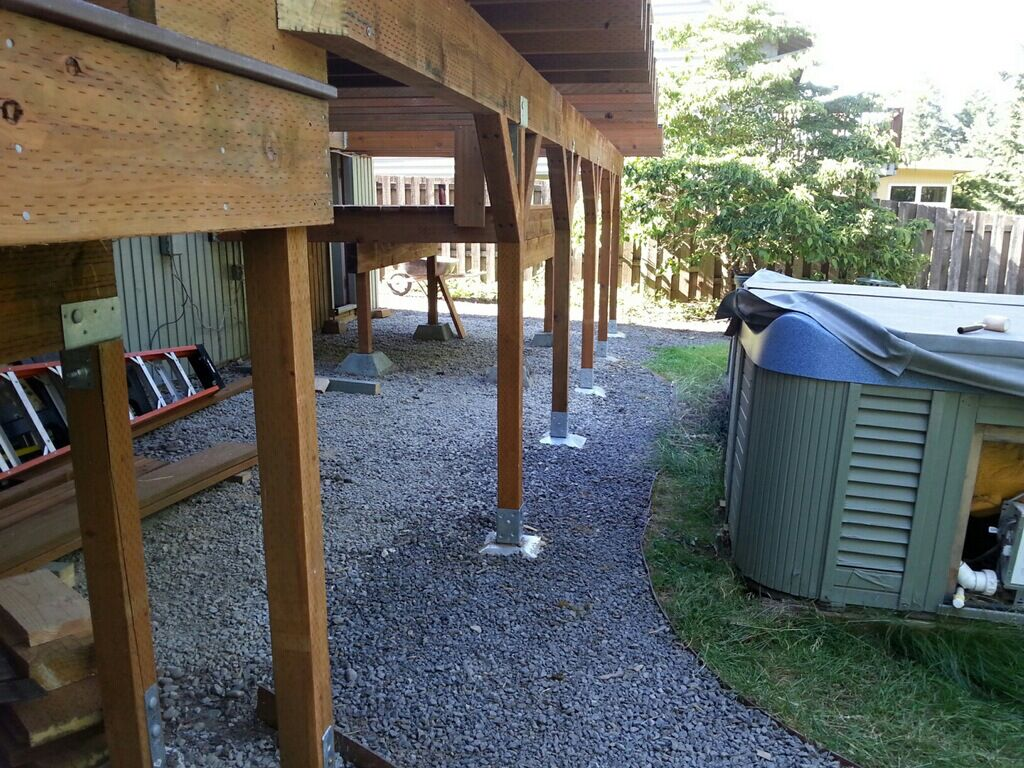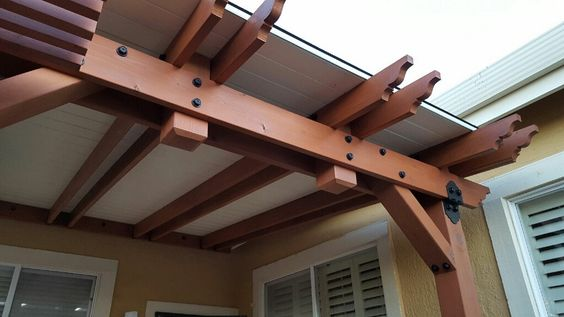Build a Deck Without Digging Holes Using a Deck Post Base and Post Anchor
Deck blocks and post anchors combined with base plates can create a solid foundation for a deck substructure.
I’ve built many decks, and the hardest part is always digging the holes. It’s dirty work digging into the ground. In order to get enough space to ensure the posts are perfectly vertical, it’s normal to dig the hole wider than is strictly necessary for the post. When you add in the need to dig down past the frost line to keep the freezing ground from heaving the post up during winter, this can make for a big hole in the ground.
Unfortunately, nearly all of the methods of anchoring a post in the ground involve digging. Even foundations where you’re not actually putting a post into the ground require you to dig down deep in order to pour the concrete for a pier or footer. In fact, until recently there was no good way to build a deck without digging holes to anchor it unless you happened to be lucky enough to be building onto an existing concrete slab. The universal disdain for digging has not gone unnoticed, though, and there are now a couple of foundation systems that spare deck builders from the task of digging.
Option #1: Build a Deck Without Digging Holes Using Deck Blocks
There are two types of deck foundation systems that don’t require that the builder to spend hours digging a hole first. The oldest of these are deck blocks, and these are just formed concrete blocks. Although they can be buried, and sometimes are, they’re really designed to rest on the ground and spare the builder from digging, although the ground may require some leveling first. One advantage of sitting on top of the ground is that deck blocks are unaffected by frost heaving.
Deck blocks come in two different forms. One type has an indentation in the top for a four-by-four post, and the other has a cross-shaped indentation meant to directly support the beams with no intervening post. Deck blocks are at most about seven inches in height, meaning that they’re really meant for decks that are low to the ground. The variant that’s designed to support a four-by-four allows you to build higher, but I would recommend keeping a deck built with deck blocks lower than six feet from the ground to the surface of the deck.
How to use deck blocks: Deck blocks stand in for the posts or provide a foundation for a post. They should be laid out similarly to deck posts, with the caveat that the spacing should be a little closer together, around five feet or so beneath the beams. The main difficulty in using deck blocks with posts is that the indentation for the posts is slightly larger than the post itself. This allows a high degree of movement until the beams are fastened to two posts, tying them firmly in position. This makes building with deck blocks a two-man job just to ensure everything remains lined up.
One of the most noticeable things about deck blocks is the lack of fasteners tying the blocks to the timber. The weight of the deck is all that holds it into place. But because the deck is held in place mainly by its own weight, it’s possible for a strong wind to lift it up. For this reason, it’s best if decks built on blocks are not tied directly to the house. In spite of their limitations, deck blocks have been a popular choice for deck foundations for no other reason than that they make building a deck close to the ground easier. For a long time, they were the only option for a deck foundation that didn’t require digging, but new developments have come along.
Option #2: Build a Deck Without Digging Holes Using Post Anchors
A post anchor is a bracket designed to hold a post with flanges underneath. Instead of digging, the flanges are driven into the ground by hammering on a bit inserted into the bracket with a sledge or a jackhammer. The post is then inserted into the bracket and held in place with screws. Post anchors make it easy to install a fence post without cement or other types of anchoring. Another huge advantage of post anchors is that they can help keep your fence posts from rotting by protecting the wood from direct, constant contact with damp soil. On their own, these are suitable anchors for a fence or a light structure like an arbor.
When they’re driven through a base plate and pounded into the soil with a jackhammer, they make a suitable foundation for a heavier structure like a deck, and are a little more secure than deck blocks. The anchor is in the ground instead of resting on top of it, and if driven in with a jackhammer, the compressed earth beneath the foundation plate will help keep them from shifting.
How to use post anchors: Using post anchors, like deck blocks, starts with laying out the posts and appropriately spacing them. Spacing for a deck supported by typical four-by-fours will be about six feet from post to post. Once the spacing is determined, place the anchor through the deck plate, and place the jackhammer driver bit into the bracket of the anchor. A post meant to support a deck must be driven with a jackhammer to thoroughly compact the soil beneath. This is a major part of the foundation’s ability to distribute the load, and the necessary compaction is difficult to impossible to get with manual tools. Drive the anchor into the ground through the plate foundation, checking the level intermittently to ensure it remains plumb. Continue to drive it for 30 seconds after the plate has met the ground in order to compact the soil. Place the post in the bracket, secure it with screws, and then build the deck.
The first and most noticeable advantage of using post anchors rather than deck blocks is that the post is fixed firmly in place without needing additional cross pieces. Being tied to the ground instead of resting on top of it will keep the post in place during construction and will make building the deck a lot easier.
As a direct result, you can build higher with more confidence, up to eight feet in height from the ground to the surface of the deck. Like deck blocks, though, a deck with a foundation of post anchors and bases should be built as a freestanding deck without direct attachments to other structures. This is because they can suffer from uplifting forces from strong winds in a similar way as deck blocks do.
Deck post bases combined with anchors are an excellent choice for decks that are freestanding in the yard. They’re anchored more firmly than deck blocks, and this makes it easier to construct ornamental decks around pools or attractive viewing platforms–whatever you can imagine for your yard.
OZCO Building Products’ OZ-Deck Foundation System is one of the best ways to build a deck without digging holes. It’s a hot-dipped galvanized plate that when combined with OZCO’s post anchors creates a solid foundation so you can build a solid deck without digging holes or pouring concrete. Contact OZCO to find out more about the OZ-Deck Foundation System and other building breakthroughs from OZCO, or locate a dealer near you.












Leave a Reply